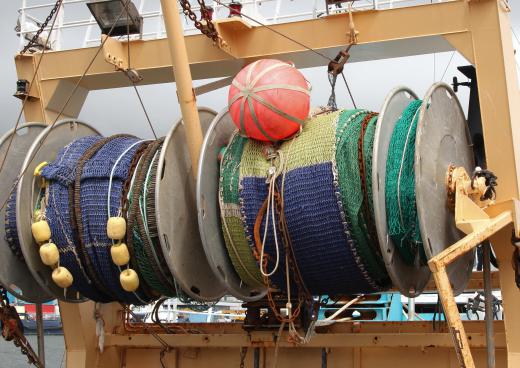Kevlar® gloves are used in industrial and manufacturing environments. Lumber jacks, chefs, fisherman, landscapers, butchers and builders commonly wear Kevlar® gloves as well. Kevlar® itself is a material patented by DuPont in 1965. These fibers are both strong and lightweight, making this material ideal for safety gear. Kevlar® gloves are also heat and cut resistant, and will not melt, catch fire, or conduct electricity. The fibers used in these gloves can also be as strong, if not stronger than, steel.
Worn in many hazardous working environments, Kevlar® gloves are comfortable but protect the wearer from the dangers of glass, abrasives, assembly-line blades and sheet metal. Also, scuba divers sometimes wear this material to prevent cuts from sharp coral and rocks. One drawback to Kevlar® is that it can be broken down by ultraviolet light, so it cannot be used in areas where there would be constant, long-term exposure to the sun.

Kevlar® gloves come in several varieties. Some of these working gloves are designed to enhance the wearer's grip despite heavy oil or other lubricants. Other types of Kevlar® gloves are designed to prevent contamination in food manufacturing environments, as Kevlar® fibers are constructed in such a way that prevents fuzz, dust and lint. One type of Kevlar® glove, the Ove Glove®, is designed to withstand heat up to 540 degrees Fahrenheit (282 degrees Celsius) and be used as an oven mitt.

Kevlar® gloves can be washed and dried numerous times without wearing out. Since Kevlar® gloves are often reversible, they can be worn a long time. Kevlar® gloves may also be worn beneath other gloves as a protective liner. Dishwasher-safe varieties provide an added convenience to chefs and other food service professionals.
Body armor used by the military, correctional facility employees and police often utilizes Kevlar®, as the material is also bulletproof. Attire for motorcyclists also might contain Kevlar®. In addition, Kevlar® is used in special pants created solely to protect chain saw operators, as well as aprons, jackets, sleeves and leggings. Besides being used in clothing and gloves, Kevlar® can also be found in suspension bridge cables, bicycle tires, racing sails, fiber optics, brake linings, ropes and airplane parts. Scotland's famous Aberfeldy Bridge uses ropes containing Kevlar®.

Composite materials using Kevlar® and other compounds are useful in the construction of sports equipment, including lacrosse, ice hockey and field hockey sticks, cricket bats, kayaks, and badminton, squash and table tennis rackets. Air packs used by some firefighters and fire resistant mattresses also contain this amazing material. Kevlar® also offers some acoustical benefits, and can be utilized in drum heads, reeds for woodwind instruments and speakers.
